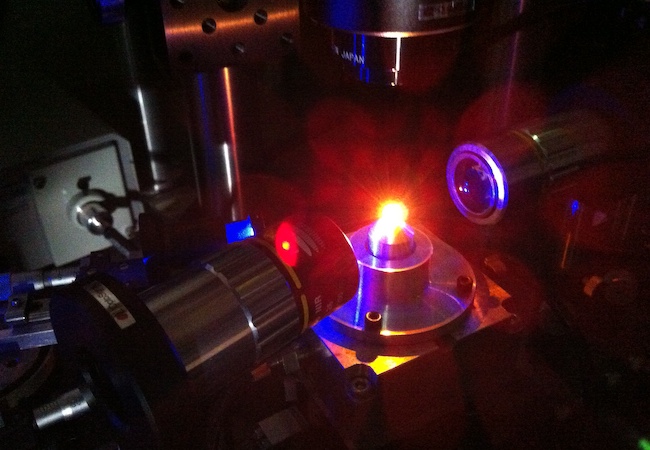Experimental Facilities
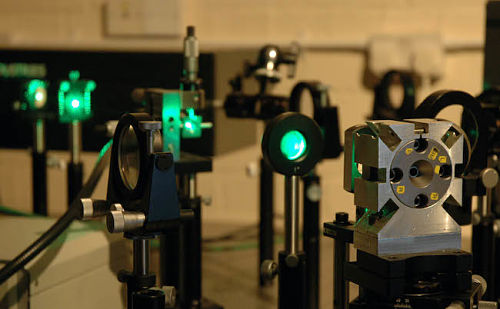 Research Highlights
Research Highlights
Hydrous silicate melts and the deep mantle H2O cycle
In situ observation of nanolite growth in volcanic melt: A driving force for explosive eruptions
The fate of carbonate in oceanic crust subducted into earth’s lower mantle
Structural Ordering in Liquid Gallium under Extreme Conditions
Slab melting as a barrier to deep carbon subduction
Generation of porphyry copper deposits by gas–brine reaction in volcanic arcs
Frequency and magnitude of volcanic eruptions controlled by magma injection and buoyancy
Linking Petrology and Seismology at an Active Volcano
Petrology Group members involved in €3.5m project to study processes behind volcanic unrest
Deep Mantle Cycling of Oceanic Crust: Evidence from Diamonds and their Mineral Inclusions
Petrology Group member Jon Blundy wins Royal Society Wolfson Merit Award
Primary carbonatite melt from deeply subducted oceanic crust
Petrology Group member Jon Blundy elected to Fellow of the Royal Society
The Petrology Group hosts a world-class suite of cutting-edge equipment capable of recreating the extreme conditions of pressure and temperature ranging from Earth’s surface to its centre. Much of our equipment is designed, built and maintained in collaboration with the machinists who operate the well-equipped machine shop situated alongside the Petrology Group laboratories. Below is a list of our primary equipment. Facilities include 1 atmosphere furnaces (including gas mixing), cold-seal pressure vessels, piston cylinder and multi-anvil presses, laser- and resistively-heated diamond anvil cells and a laser milling machine for the preparation of sample assemblies with unparalleled precision.
1 atm furnaces
We have two GERO™ vertical tube furnaces capable of reaching 1700°C. Both are equipped with a custom CO-CO2 gas-mixing system using Alicat Scientific mass flow controllers combined with a mechanism to allow the user to easily lower the sample into the furnace and drop it into a water bath for rapid quench. This system was designed and built in collaboration with the School of Earth Sciences Machine Shop.
We also have a large general purpose Lenton box furnace, capable of reaching 1400°C in air.

Experiments designed to test the effect of volcanic ash on jet turbine blades (left); Custom built gas-mixing system mounted on GERO tube furnace (right)
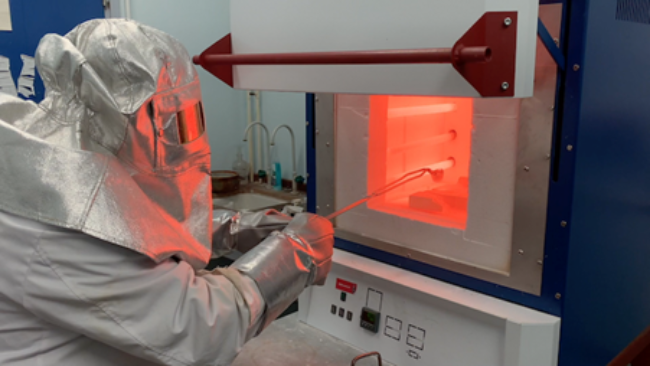
Lenton box furnace
Cold-seal pressure vessels (CSPVs)
The Petrology Group has five water-pressurised cold-seal pressure vessels, capable of re-creating pressures of 25-300 MPa and temperatures of 900°C for the simulation of shallow crustal processes including sub-volcanic magma chamber dynamics and eruption and are capable of rapidly quenching experiments at rates of up to 200°C/sec. The 'bomb' is a bored-out nemonic rod that is connected to a pressure system (via a water-cooled seal) and heated externally by a furnace that is lowered over it. The CSPVs have systems for computer-controlled, programmed decompression experiments.
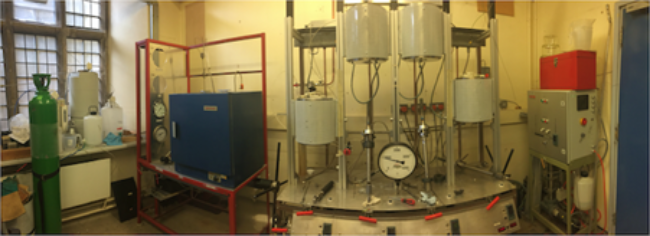
Cold-seal pressure vessels
Piston-cylinder apparatus
The Petrology Group has four end-loaded piston-cylinder apparatus for the generation of pressures of 0.3 – 3.5 GPa (approximately 10 – 100 km depth) depending on the diameter of the piston used (we have 0.5″, 0.75″ and 1.0″ systems available). These machines are used to study processed occurring in the lower crust and upper mantle. The 0.5″ pressure cell uses a graphite furnace and salt/Pyrex pressure media (and occasionally BaCO3, CaF2, or Talc) while the 0.75″ cell has a tapered graphite furnace with Talc and Pyrex as the pressure medium. Cell designs and pressure calibrations are described in detail can be found here:
McDade, P., Wood, B. J., Westrenen, W. V., Brooker, R., Gudmundsson, G., Soulard, H., Najorka, J., & Blundy, J. (2002). Pressure corrections for a selection of piston-cylinder cell assemblies. Mineralogical Magazine, 66(6), 1021–1028. https://doi.org/10.1180/0026461026660074
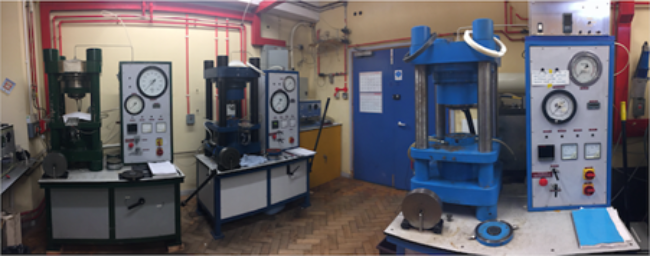
Three of our piston cylinder apparatus
Multi-anvil presses
We have two 1000-tonne multi-anvil presses with Walker-cells containing 6 first stage steel anvils surrounding 8 tungsten carbide cubes (so-called 6-8 devices). Each carbide cube has a triangular corner truncation leaving an octahedral volume at the centre into which is fitted a sintered MgO octahedron, which acts as the pressure transmitting medium. Inside a cylindrical hold drilled through the octahedron is placed a ZrO2 sleeve, a cylindrical furnace (made of graphite, Re, LaCrO3 or TiB2), and then a precious metal capsule surrounding the sample (and itself surrounded by MgO and Al2O3 spacers. The sample space also contains a thermocouple for temperature measurement. These devices were designed and built in the School of Earth Sciences Machine Shop located next-door and can achieve pressures of up to 25 GPa, which means they can access the whole of the mantle transition zone. Ceramic parts for these experiments are machined on a dedicated lathe in the machine shop. Both pressure and temperature can be pre-programmed, and computer controlled.
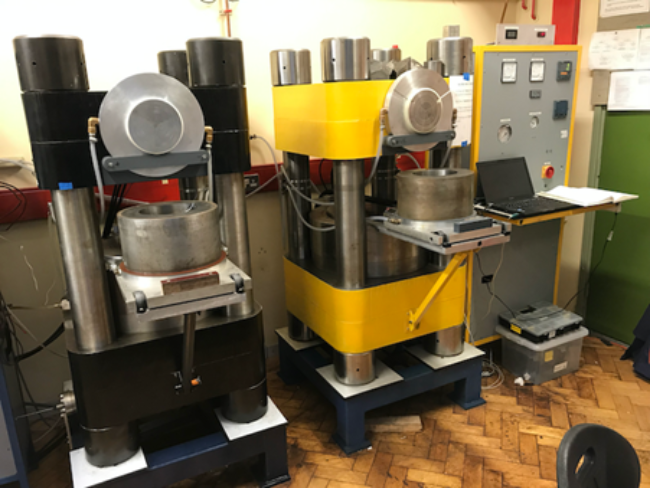
Our two 1000-tonne multi-anvil presses with Walker cells and automated pressure and temperature control
In-situ Rheometer *NEW*
We are developing the world's first rheometer capable of measuring viscosity at both high temperatures and pressures relevant to volcanic systems (simultaneously up to 1200°C and 200MPa). This allows viscosity measurements for most common rock types whilst fully molten, with the pressure maintaining a range of dissolved volatile contents. As samples are cooled and/or decompressed, the effect of crystal and bubble growth can be accessed. The data will improve the constitutive equations that are used to model volcanic processes, in particular the switch from effusive to explosive behaviour. This innovation is funded by the NERC DisEqm project in collaboration with Anton Paar.

The new rheometer lab
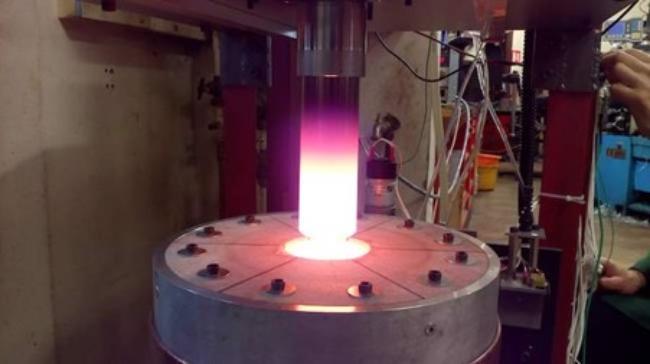
High temperature testing of the new rheometer
Diamond Anvil Cell Laboratory
The diamond anvil cell laboratory houses a state-of-the-art laser heating facility which is used to heat samples in a range of different diamond anvil cells (Princeton-type, BX-90, Le Toullec etc). Temperature is measured using spectroradiometry and 4-color multi-spectral imaging radiometry using custom analysis software written in house (see below for a reference). Pressure is measured using a separate ruby fluorescence optical system. Using these tools, we can access the geotherm throughout the planet to study the phase diagrams of lower mantle lithologies and the iron alloy from which the core is made. We also study the phase diagrams of transition metals, the structure of liquids and synthesise new high-pressure superconducting compounds in collaboration with researchers in the School of Physics.
The DAC lab also contains three repurposed UV laser ablation systems for the microfabrication of small parts for DAC experiments. The most recent addition is a system for laser melting samples aerodynamically levitated in a mixed-gas atmosphere allowing us to synthesise glass starting materials that are only quenchable in a containerless environment under controlled redox conditions (see the image at the top of this page).
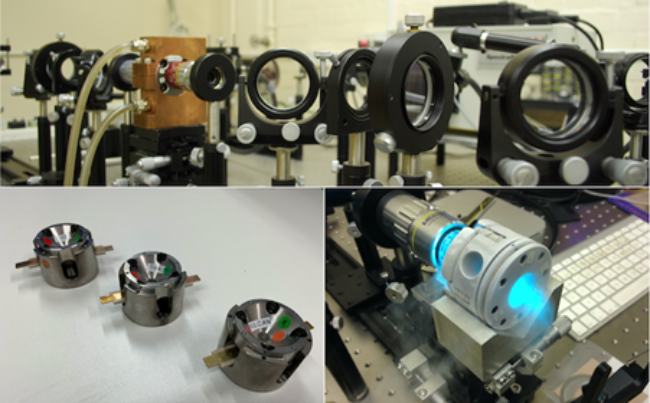
Top: A DAC in its water-cooled copper holder ready for a laser heating experiment. Bottom Left: BX-90 cells for internal resistive heating experiments. Bottom Right: A cold DAC after cryogenic loading with liquid Ar, ready for pressure measurement using our ruby fluorescence system.
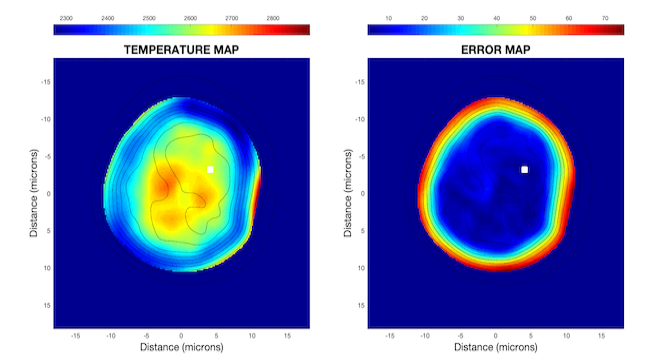
Custom software MIRRORS for analysis of 4-color multispectral imaging radiometry measurements, producing 2-D maps of temperature inside the laser heated DAC.
Lord, O. T., & Wang, W. (2018). MIRRORS: A MATLAB® GUI for temperature measurement by multispectral imaging radiometry. Review of Scientific Instruments, 89(10), 104903. https://doi.org/10.1063/1.5041360
